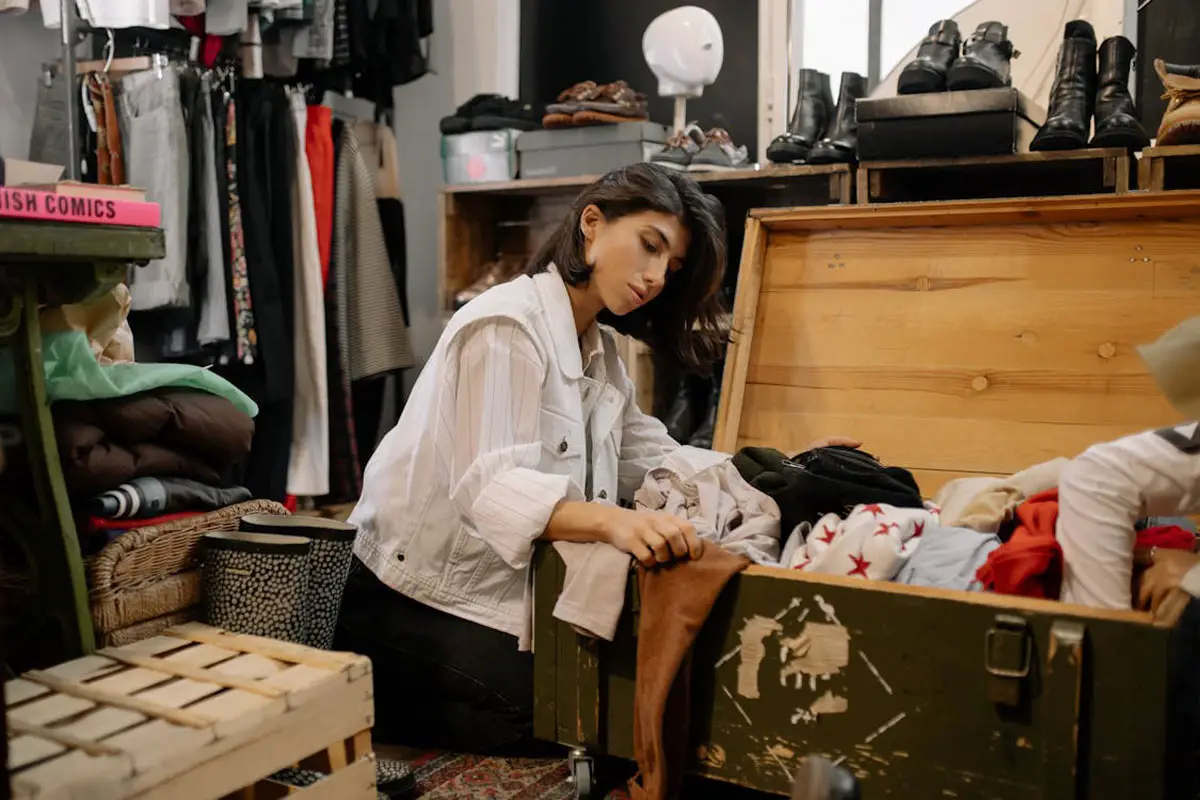Layering Love: Building a Sustainable Wardrobe from the Wrist-Up

Although sustainable fashion has a fancy ring to it – something reserved for people who have color-coordinated closets and know the names of all the cool, ethical brands – it is actually quite basic. Also, sustainability doesn’t have to be this overwhelming, all-or-nothing thing. You don’t have to throw out your entire wardrobe and replace it with organic linen and handcrafted vegan leather. In fact, the best way to start? Small.
Not small, like boring. Small like—bracelets. Rings. Scarves. Accessories that don’t demand a total wardrobe overhaul but still make a difference. Think of them as the gateway to a more intentional closet, a way to experiment with slow fashion without spiraling into a panic about where your socks were made. Plus, when you focus on the little things, you get to have fun with your style without worrying about whether you’re “doing sustainability right.”
So yeah, this isn’t about making you feel bad for what you own. This is about making small changes that actually stick. And when something sticks, it becomes a habit, and habits are what lead to real, long-term change.
Why We Overcomplicate Sustainable Fashion
Guilt. That’s the big one, isn’t it? You hear sustainable fashion, and suddenly, it’s like, “Oh no, I still own that polyester dress from three summers ago. Am I a terrible person?” Spoiler: You’re not.
We put way too much pressure on ourselves to do it perfectly. To swap every fast-fashion piece for an ethically made alternative overnight. But that’s not realistic, and honestly? It’s not even the point. Sustainability isn’t some exclusive club where you either do everything right or don’t bother at all. It’s about being mindful in any way that works for you. And the most impactful thing you can do isn’t to erase your past choices—it’s to start making better ones from this moment on.
And the easiest way to do that? Don’t start by staring at your entire wardrobe and questioning your life choices. Start smaller. Pick one thing—jewelry, scarves, even socks if that’s your thing—and be intentional about it. That’s it. No pressure. Just a shift in mindset, one piece at a time. And the best part? The more you practice this, the more naturally it becomes part of how you shop and dress.
Bracelets, Rings, and the Power of Statement Accessories
Let’s talk about power moves. The kind that makes a basic white tee and jeans feel like a whole look.
Jewelry does that. Accessories in general, really. They’re sneaky like that—small but mighty.
Simple gold bracelets? Effortless. A chunky, handwoven bracelet from a local artist? Even better. Something made from recycled materials that also happens to be cute? Now, that’s what we’re talking about. And here’s the kicker—good jewelry doesn’t follow trends the way clothes do. You’re not donating it after one season. You’ve been wearing it for years.
Secondhand, Upcycled, and Ethical Pieces: Where to Start?
Alright, let’s say you do want to add something new to your wardrobe (totally fair). Where do you even begin?
Thrift & Vintage Stores
If you’ve never gone thrifting, now’s the time. It’s basically a treasure hunt where patience is rewarded with one-of-a-kind finds. And the best part? The quality is often so much better than what’s on store shelves now. Clothes were just made differently back then. And unlike fast fashion, where a hundred other people might own the exact same item, secondhand pieces feel personal—like they can take you to a different time.
Upcycled & Handmade Accessories
Ever seen jewelry made out of old guitar strings? Or purses crafted from old billboards? People are so creative, and upcycled accessories prove that sustainability doesn’t have to be boring. Plus, when you buy from small artists and makers, you’re supporting real people instead of giant corporations. And honestly? There’s something really special about knowing that no one else has the exact same piece as you do.
Ethical Brands (Without the Marketing Fluff)
Not all sustainable brands are expensive, and not all expensive brands are sustainable. The key is looking beyond the buzzwords. Check if they talk about fair wages. See if they actually explain where their materials come from. And remember—you don’t have to buy new at all. Using what you already have is the most sustainable thing you can do. And when you do buy, make it count—choose something you’ll actually wear, not just something that sounds sustainable on paper.
The Joy of Slow Fashion: Making Every Piece Count
Have you ever bought something, worn it once, and then forgotten it existed? Yeah, same. That’s what fast fashion encourages—constant buying, constant discarding. But slow fashion? It’s the opposite. It’s about wearing things. Loving them. Keeping them around.
Imagine this: Instead of impulse-buying trendy pieces that last a season, you build a wardrobe that actually feels like you. Where every single thing, from the scarves to the rings to the well-worn jackets, tells a little story. When you finally add something new, it’s because you really want it, not because an algorithm convinced you that you needed it.
That’s the kind of style that lasts. And it’s honestly more fun. Because when you stop chasing trends, you start playing with fashion again. And that’s when it stops feeling like a chore and starts feeling like you.
Final Thought: Just Start Somewhere
You don’t have to do it all at once. You don’t have to do it perfectly. You don’t even have to do it in a way that makes sense to anyone else. Just start.
Start small. A thrifted bracelet. A scarf you already own but haven’t styled in a while. A fresh way of layering what’s already in your closet. The tiniest shifts add up, and before you know it, you’re living a little more intentionally—without even trying that hard. And isn’t that the goal? To make choices that feel good, not just look good?
Sustainability isn’t about depriving yourself. It’s about making what you have matter. And that? That’s a wardrobe worth building.










